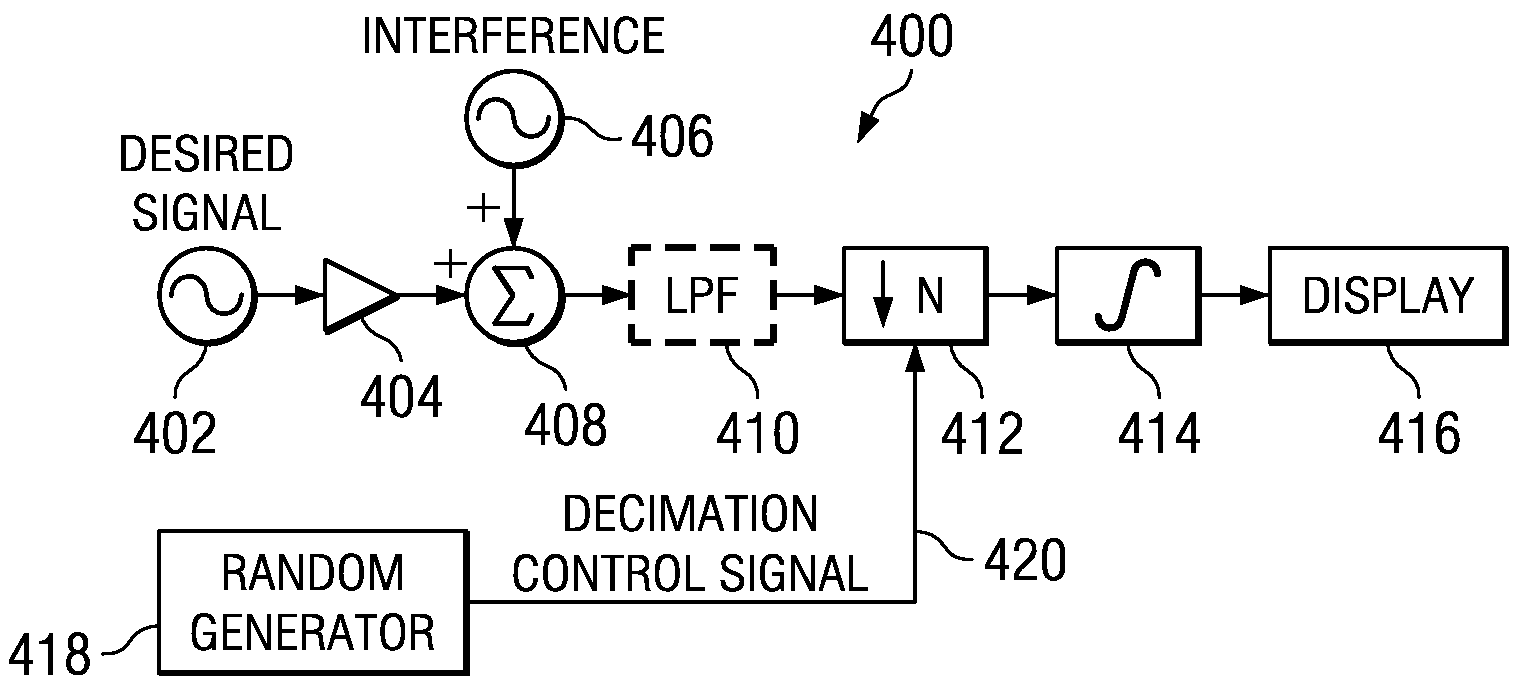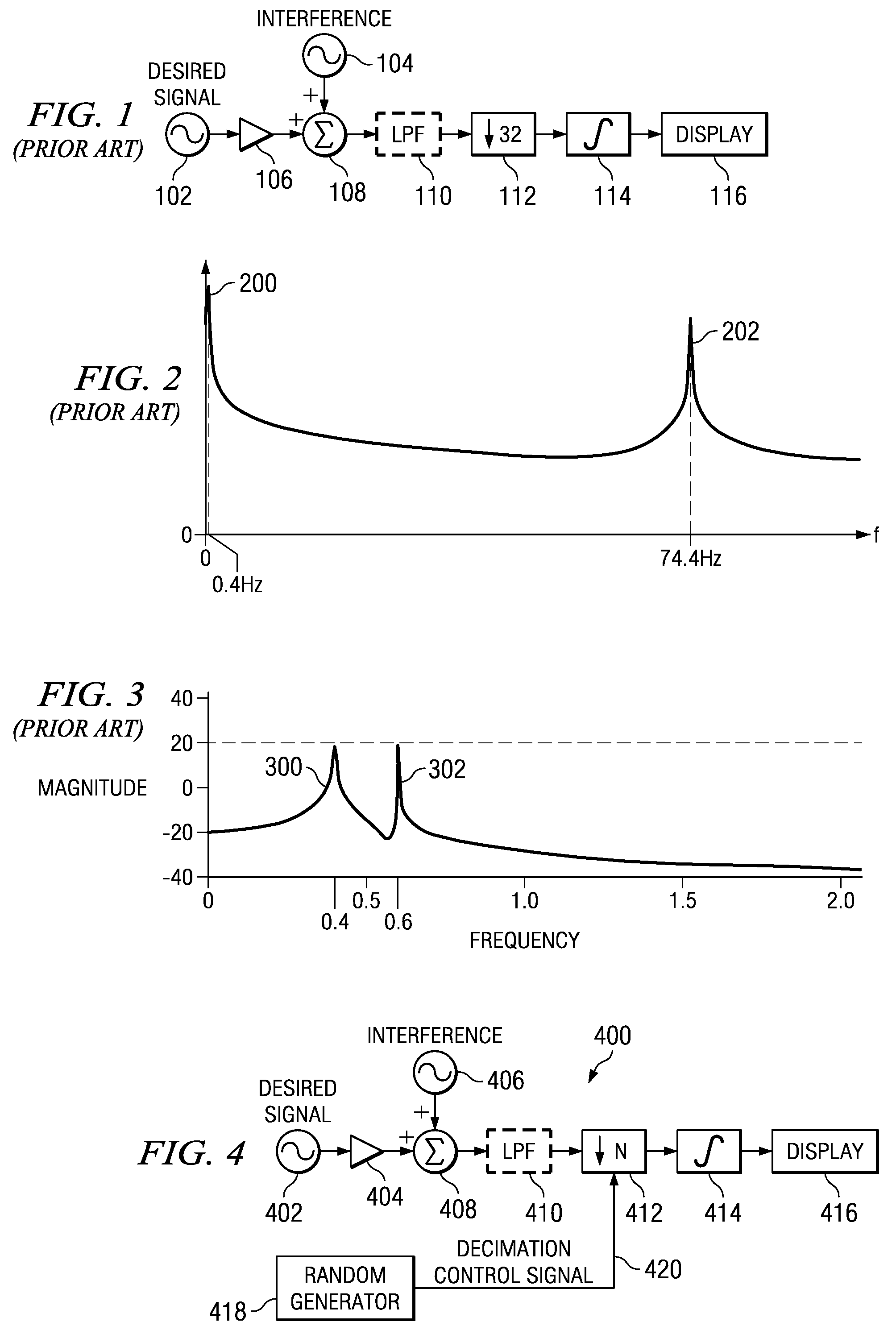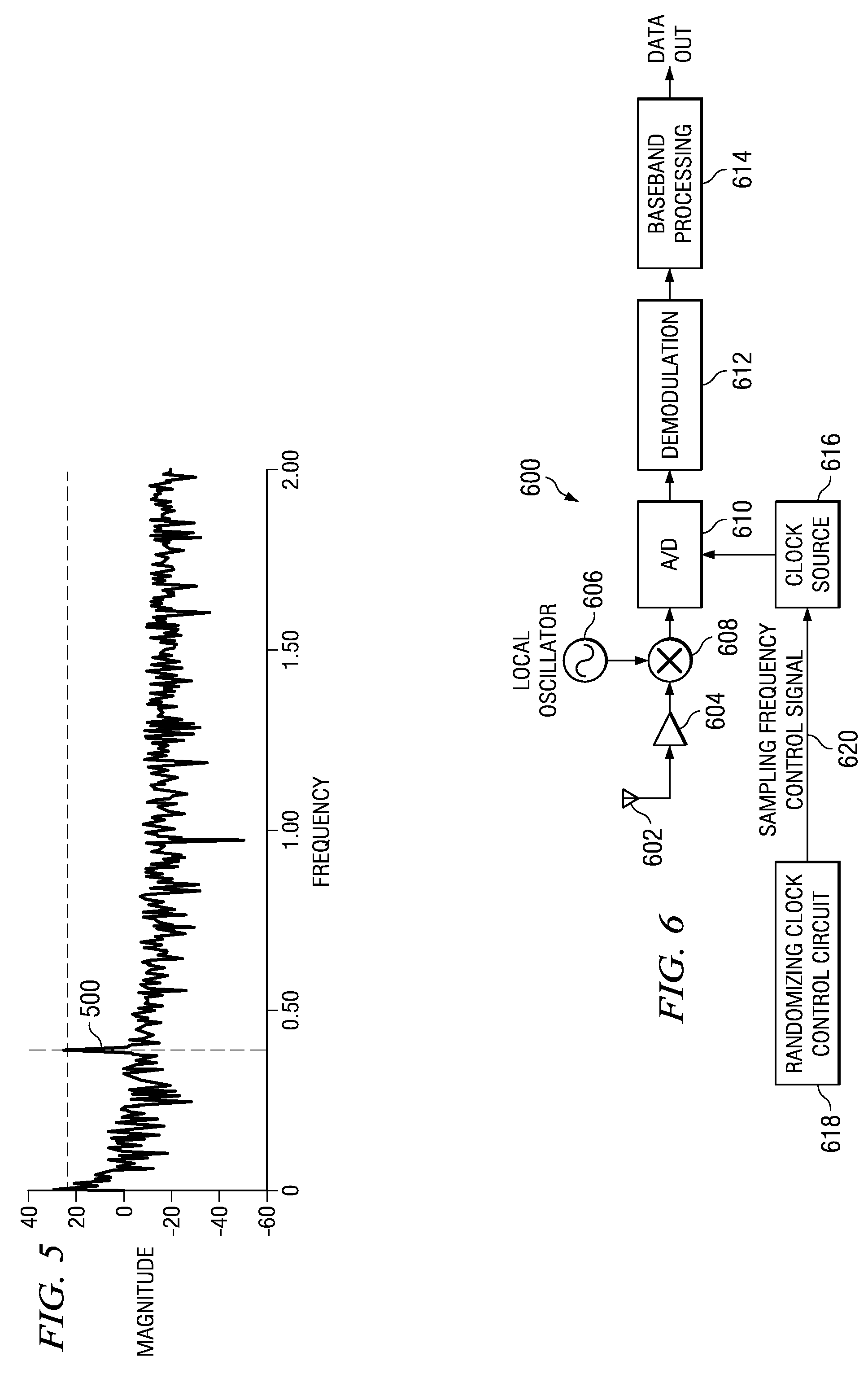System for suppressing aliasing interferers in decimating and sub-sampling systems
a decimating and subsampling system technology, applied in the field of data communication, can solve the problems of less noise floor, less unwanted signals, and interference with desired signals, and achieve the effects of reducing noise levels, reducing complexity, cost, and reducing the requirements of anti-aliasing
- Summary
- Abstract
- Description
- Claims
- Application Information
AI Technical Summary
Benefits of technology
Problems solved by technology
Method used
Image
Examples
Embodiment Construction
Notation Used Throughout
[0027]The following notation is used throughout this document.
[0028]
TermDefinitionA / DAnalog to DigitalASICApplication Specific Integrated CircuitC / NCarrier to NoiseDSPDigital Signal ProcessorFPGAField Programmable Gate ArrayHDLHardware Description LanguageISMIndustrial Scientific MedicalLOLocal OscillatorLPFLow Pass FilterTDDTime Division Duplex
DETAILED DESCRIPTION OF THE INVENTION
[0029]The present invention is a method and apparatus for suppressing aliasing interferers in decimating and sub-sampling systems. The invention is applicable for use in numerous types of systems and is particular applicable to sub-sampling and sample rate decimating discrete time systems. For example, the invention is applicable in TDM applications such as Bluetooth environments. The invention can be used to eliminate altogether the need for a costly anti-aliasing filter having demanding requirements. Alternatively, the present invention can be used to significantly reduce the requ...
PUM
 Login to View More
Login to View More Abstract
Description
Claims
Application Information
 Login to View More
Login to View More - R&D
- Intellectual Property
- Life Sciences
- Materials
- Tech Scout
- Unparalleled Data Quality
- Higher Quality Content
- 60% Fewer Hallucinations
Browse by: Latest US Patents, China's latest patents, Technical Efficacy Thesaurus, Application Domain, Technology Topic, Popular Technical Reports.
© 2025 PatSnap. All rights reserved.Legal|Privacy policy|Modern Slavery Act Transparency Statement|Sitemap|About US| Contact US: help@patsnap.com



